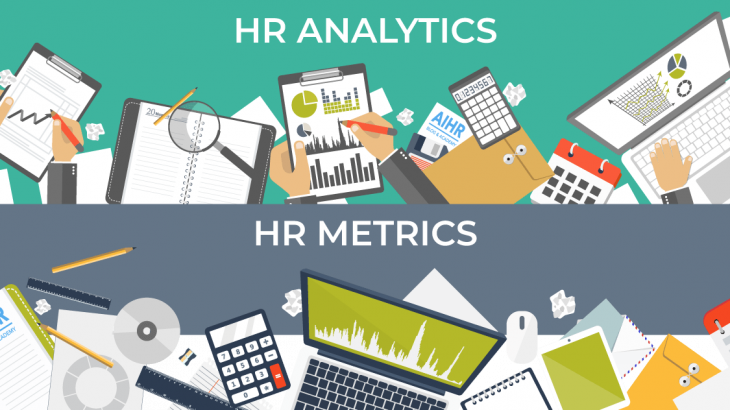HR Metrics and Workforce analysis is a useful strategic tool for HR which shares information and evidences about the functioning of the entire system by relying on facts and figures, as opposed to mere assumptions or personal opinions. Over a period of time, the HR Metrics has evolved with the usage of more quantitative and qualitative measurement methods, as it allows more access to large amount of data. Workforce analysis helps by way of gap analysis and involves forecasting of futuristic business goals and objectives.
HR Metrics and Workforce Analysis has its origin far back during the days of Taylor’s period when he propounded the notion of scientific management. Extensive research in this field, reveals the fact that with the increase in the areas of HR functioning, HR metrics and Workforce Analysis play a predominant role in sharing vital information on the people matters and support with crucial data which help in strategic decision making at the top level. Since HR is playing more of a strategic role today, hence these techniques have received a lot of importance from the HR professionals.
HR Metrics and Workforce Analytics is in a state of transition currently. Today organizations use metrics for evaluating or auditing their HR initiatives/programs and measuring its success. Data Metrics and Workforce Analytics, help the organization in implementing effective and much more informed decisions by analyzing the available information.
Objectives
The main purpose of HR Metrics and workforce analysis is to link HR objectives to strategic business activities. It enables the accessibility of information for proper managerial decision. So, a proper HR metrics and analysis should be identified. HR Metrics and Workforce Analysis can be used to analyze the crucial employee related data such as Staff Characteristics, Strategic Business Objectives and the overall HR strategies, talent acquisition and management, Employee Wellness and Productivity details and diversity targets. To conduct HR metrics, data gathering is one of the most pivotal step and the information of this can be gathered from the HR databases. The details can be collected from various sources like:
- Employee Work Tenure.
- Recruitment details including information on new recruits across various departments and the business units.
- Surveys designed and conducted by the department.
- Information gathered from the existing, new or exiting employees by way of interviews.
- Through focus groups.
Using HR Metrics and Workforce Analysis
REPORTING: Reporting addresses some of the very crucial questions pertaining to the decision making. It involves decisions about what and how metrics should be selected and presented, to whom the metrics should be communicated, equally how and when it should be reported. This is one of the most useful tools for identifying the existing problems or loopholes which affect the overall employee performance, motivation and productivity. This provides an opportunity to work upon the existing lacunas or loopholes by recommending a strategic plan of action for driving excellence in performance and improved organizational productivity. Apart from providing quantifiable data, it involves interpretation of the information, putting it in right context and recommending suitable strategies for continuous improvement.
DASHBOARDS: Dashboards are typically used to measure and display metrics defined by any organization. It helps managers to examine metrics at different levels of the organization. The metrics identified are called Key performance indicators (KPI). Dashboards provide summarized details or at a glance visual representation of information on certain key functional area of HR. It also provides scope for analyzing the key HR metrics or additional details.
BENCHMARKING: Benchmarking is a useful strategic tool by way of which a comparison can be done between the set or predefined standards against the existing achievements or outcomes. It offers practical insights on the feasibilities for achieving an outcome, helps in redefining goals and forecasting the progress by way of analyzing the existing realities and limitations on a comparative basis.
DATA MINING: Data Mining technique is one of the most valuable tools for the HR professionals, as it relies on data patterns from usually large databases for acquiring knowledge and enabling effective decision making by understanding the causal mechanisms. It uses various statistical techniques like multiple regression and correlation for analyzing these patterns of data and the relationships. The data mining process essentially involves three stages: (1) The stage of initial exploration, (2) Identification of patterns or the stage of development of models and (3) final implementation/deployment stage.
- Exploration: This is the stage of selection of data records subsets and preparation of data;
- Model building: This stage involves development of various models and selecting the best model by considering various factors or criterions;
- Deployment: This is the stage of implementation of the best model selected for arriving at effective decisions and meeting the expected outcomes.
PREDICTIVE ANALYSES: This is a very crucial tool used by the HR professionals for effective strategic decision making and improving overall organizational profitability by assessing and predicting future outcomes by assessing key indicators or processes of an organizational system.
OPERATIONAL EXPERIMENTS: operational experiments help to develop models on which the managers take decisions about the actual functioning of the organization. It helps to determine the relevant variables and how much useful they are to the system.
WORKFORCE MODELLING: Workforce modeling is a useful technique, by way of which an HR professional can understand the changes in the requirements for human capital as a result of change in the organizational environment. This can be due to strategic alliances like merger/demerger, acquisition or divestiture or due to changes in the demand for the products of the organization.





